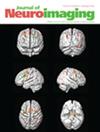Intracerebral hemorrhage risk after adjunct intraarterial thrombolysis in thrombectomy-treated acute ischemic stroke
Abstract
Background and Purpose
Intraarterial thrombolysis as an adjunct to mechanical thrombectomy is increasingly being considered to enhance reperfusion in acute ischemic stroke patients. Intraarterial thrombolysis may increase the risk of post-thrombectomy intracerebral hemorrhage (ICH) in certain patient subgroups.
Methods
We analyzed acute ischemic stroke patients treated with mechanical thrombectomy in a multicenter registry. The occurrence of any (asymptomatic and symptomatic) post-thrombectomy ICH was ascertained using standard definition requiring serial neurological examinations and computed tomographic scans acquired within 48 hours of the thrombectomy. We determined the risk of ICH in subgroups defined by clinical characteristics and the use of intravenous (IV) thrombolysis.
Results
A total of 146 (7.5%) patients received intraarterial thrombolysis among 1953 acute ischemic stroke patients who underwent mechanical thrombectomy. The proportion of patients who developed any ICH was 26 (17.8%) and 510 (28.2%) among patients who were and were not treated with intraarterial thrombolysis, respectively (p = .006). The proportion of patients who developed symptomatic ICH was 4 (2.7%) and 30 (1.7%) among patients who were and were not treated with intraarterial thrombolysis, respectively (p = .34). Among patients who received IV thrombolysis (n = 1042), the proportion of patients who developed any ICH was 9 (16.7%) and 294 (30.7%) among patients who were and were not treated with intraarterial thrombolysis, respectively (p = .028). The risk was not different in strata defined by age, gender, location of occlusion, preprocedure National Institutes of Health Stroke Scale score, time interval between symptom onset and thrombectomy, Alberta Stroke Program Early CT Score, systolic blood pressure, and serum glucose concentrations.
Conclusions
In patients undergoing mechanical thrombectomy, the risk of any ICH and symptomatic ICH was not increased with intraarterial thrombolysis, including in those who had already received IV thrombolytics.

 求助内容:
求助内容: 应助结果提醒方式:
应助结果提醒方式:


